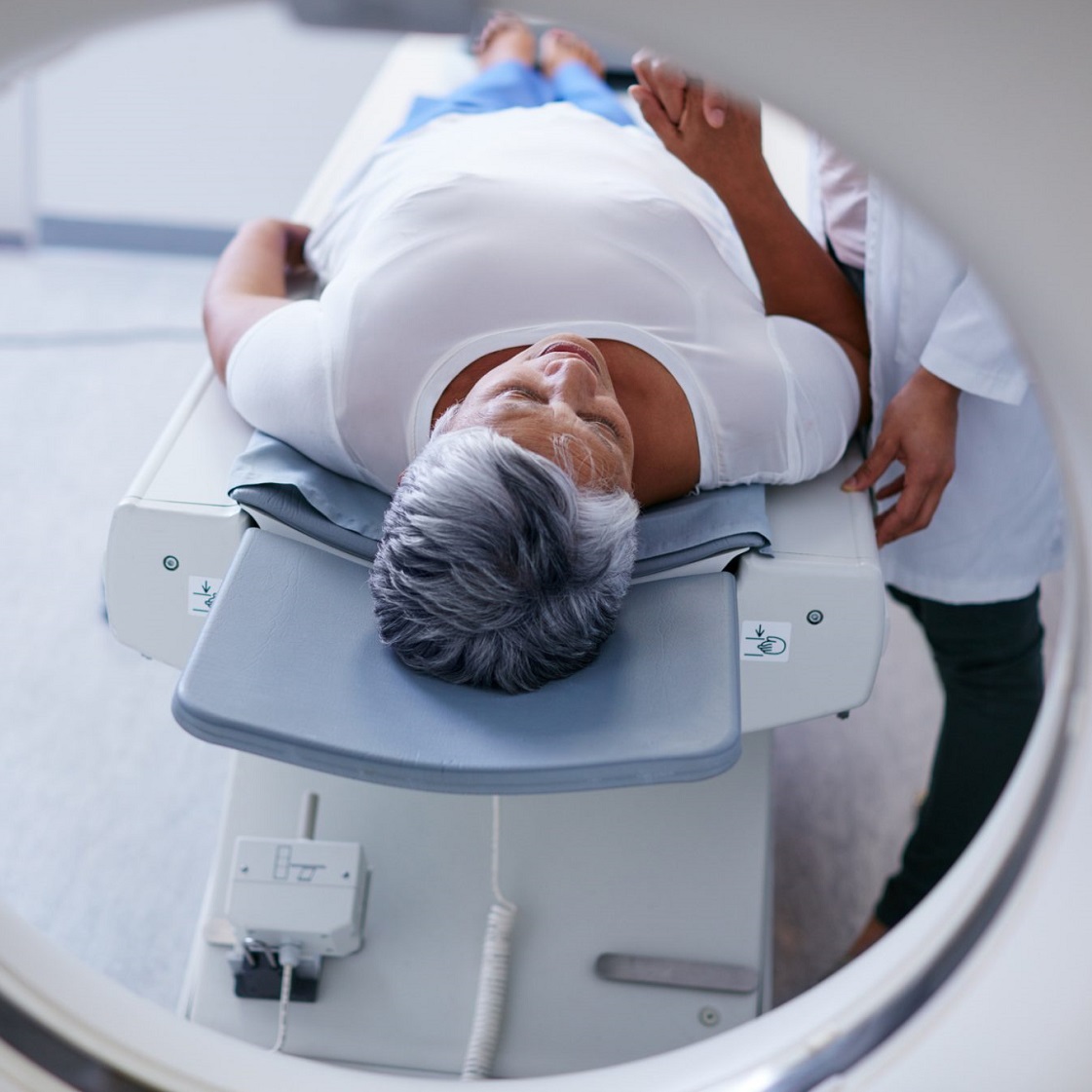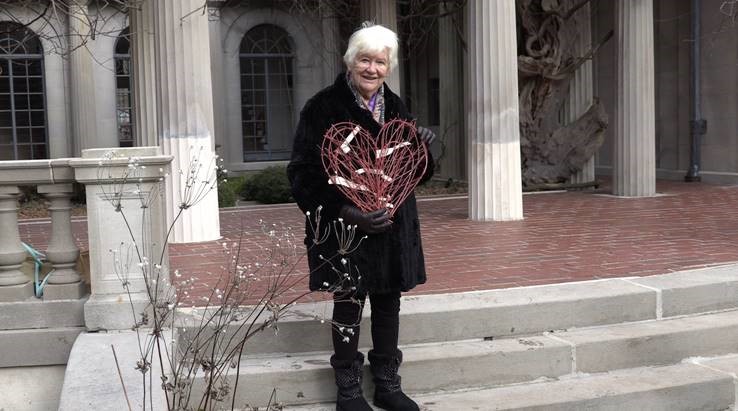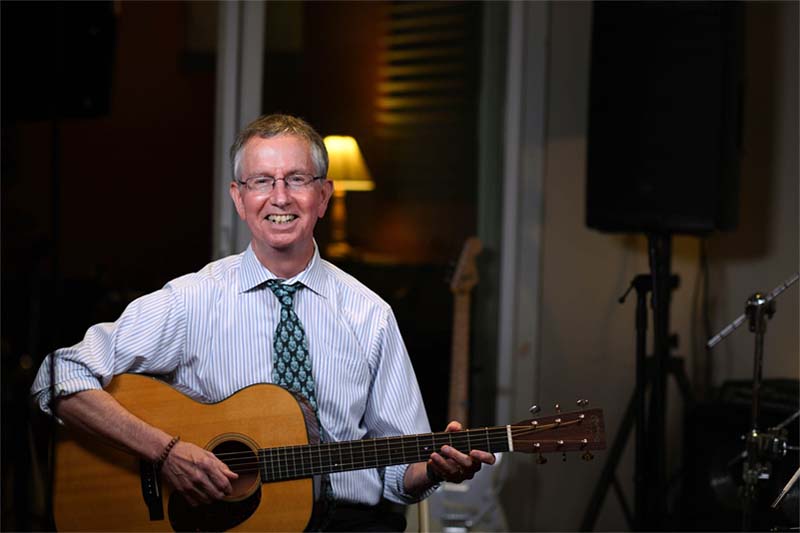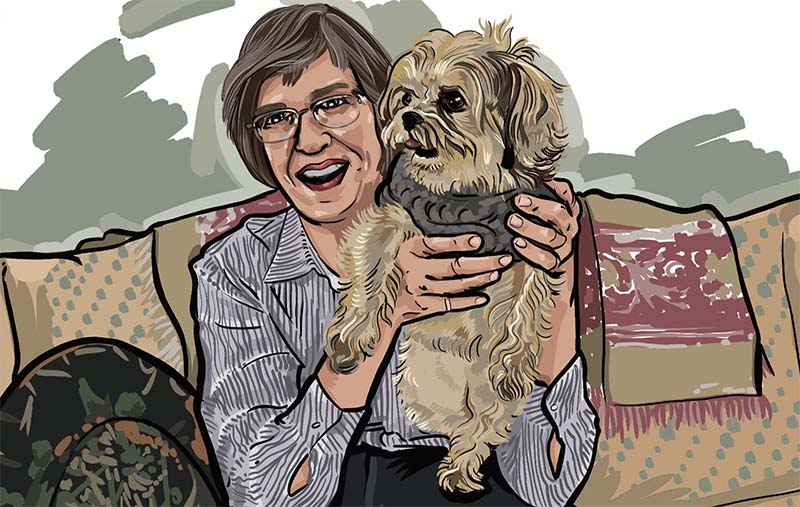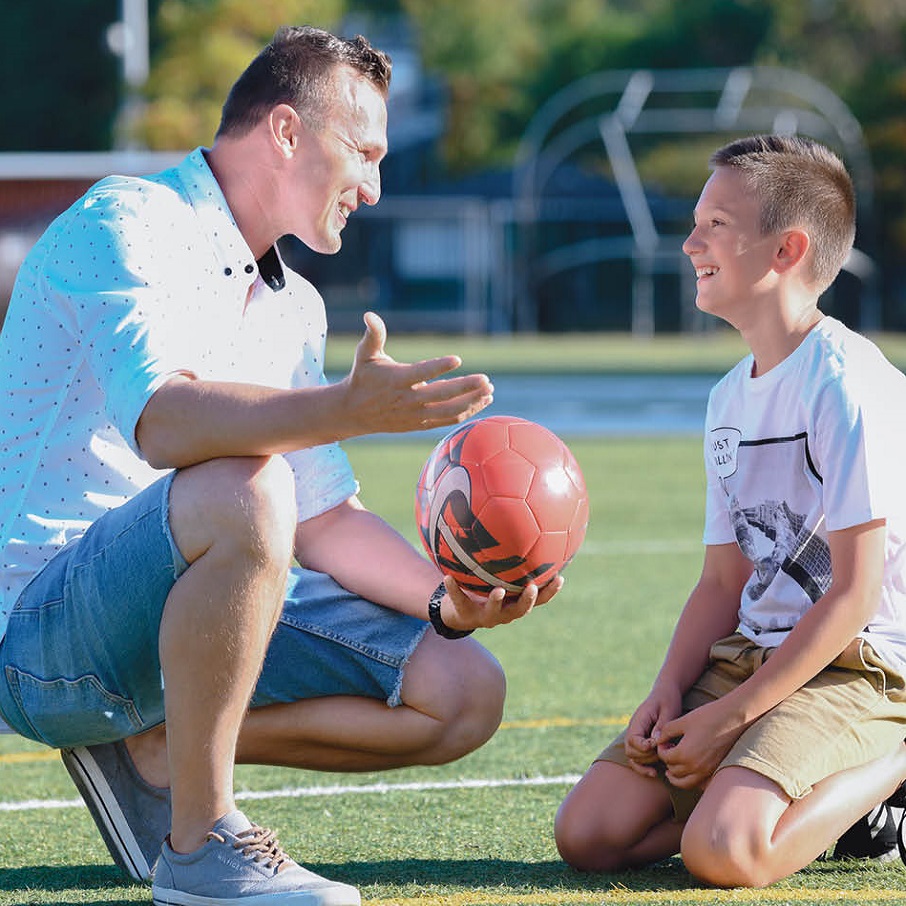Cardiac Calcium Scan Saves One Man’s Life
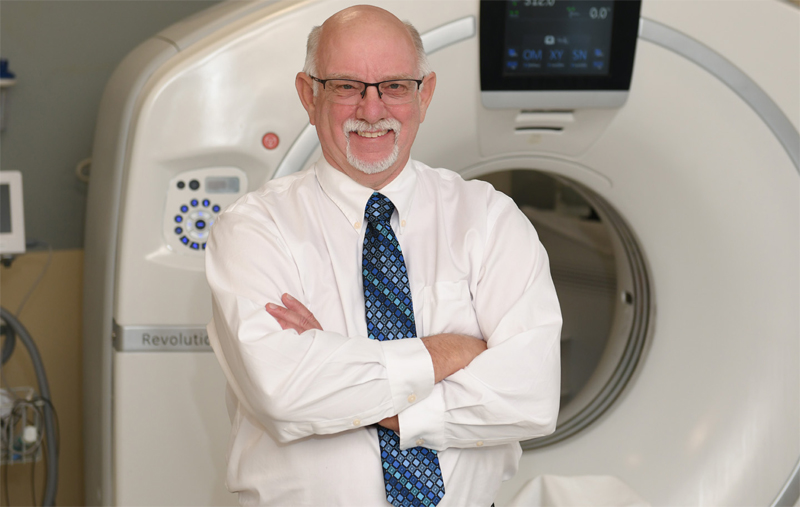
August 11, 2020
When team members were being recruited to test the new cardiac calcium scan procedure at Southern Ocean Medical Center, Kevin Jester, the hospital’s imaging manager, signed up, not because he had any worries about his heart health—he was just doing his part to make sure everything was working as it should before the hospital started offering it to patients. “It’s one thing to go through a simulation,” Kevin says. “But it’s also very helpful to have a living patient to practice on.”
The imaging procedure (called a CT Calcium Scoring scan) is a CT or CAT scan, is painless and noninvasive, and takes only 10 minutes. An electron beam detects and measures the amount of calcium in the heart’s arteries. The more calcium that is present, the greater the likelihood of developing heart disease or having a heart attack or stroke.
When Kevin finished the scan and walked into the control room to chat with his colleagues, he knew something was up. “Everyone was kind of looking at me like I had three eyeballs,” he says.
Unexpected News
Although Kevin, 64, has high blood pressure, he had no family history of heart disease or any symptoms of heart disease. On top of that, a routine heart health check-up six months prior indicated that all was normal. Yet his score on the calcium scan was sky-high.
“The biggest benefit of calcium scans is they give you an anatomical assessment of atherosclerosis [the build-up of fats, cholesterol and other substances in and on the artery walls],” says Jasrai Gill, M.D., Kevin’s cardiologist at Southern Ocean. “That helps us understand if patients are high-, medium- or low-risk. Then it helps us individualize and further tailor the aggressiveness of their cardiovascular therapy.”
Kevin’s calcium scan results suggested that he was at high risk for a cardiac event such as a stroke or heart attack. So Dr. Gill recommended a cardiac catheterization, which Kevin underwent that same week at Jersey Shore University Medical Center.
In the recovery room, Dr. Gill told him he had good news and bad news. The good news, he said, was that Kevin didn’t have any stents put in during the catheterization. The bad news? Kevin needed a quadruple bypass. “My wife and I looked at each other and were in total disbelief,” he says.
He had one 100-percent artery blockage, and three arteries that were 80-percent blocked. Dr. Gill referred him to cardiothoracic surgeon Brook DeJene, M.D., who was at Kevin’s bedside within two hours and scheduled an office visit the next business day.
Dr. DeJene explained Kevin’s options: Do nothing and risk a heart attack or stroke; try stents, which may or may not work; or have the quadruple bypass.
An Extra-caring Touch
Kevin, who has worked at Southern Ocean for 22 years, had not met Dr. DeJene before he became his patient, but he was immediately impressed. “You’re apprehensive and you wonder if you’re making the right decision,” he says. “But Dr. DeJene had such a calming nature about him that you just felt very comfortable and confident.”
Kevin was even more impressed when he arrived at Dr. DeJene’s office. While it’s routine for a nurse to take patients from the waiting room to the exam room, Dr. DeJene did that himself, as well as took his blood pressure and removed his stitches after surgery. “He does everything himself. That impressed me,” Kevin says. “He genuinely cares about his patients.”
Both Drs. DeJene and Gill thought the surgery was Kevin’s best option, partly because his heart was in such good shape. Dr. Gill didn’t want him to take the chance of having a heart attack and damaging his heart. “Now, I’m good for another 64 years!” Kevin jokes.
Within a week and a half of getting the calcium scan, Kevin had his quadruple bypass surgery. He spent a week in the hospital, followed by a month of home care with Hackensack Meridian At Home visiting nurses. After that, he completed two months of outpatient cardiac rehabilitation at Southern Ocean, where he worked with “a great group of nurses,” he says. “They keep you moving, and they educate you at the same time—and you have a lot of fun doing it. They’re a special group of people, I’ll say.”
‘Don’t Be Afraid’
A year after the surgery, Kevin has no physical restrictions. He is back to working at the 5-acre horse farm he runs with his wife, Janine Howley. He tosses hay bales around and teaches carriage driving as his form of strength exercising, and he bought a treadmill for cardio exercising. “Walking is the best thing to do for cardio health,” he says.
After his experience, he has told all his family and friends to get calcium scans. “Don’t be afraid to go get tested, even if you’re feeling good,” he says.
Next Steps & Resources:
- Meet our source: Jasrai Gill, M.D.
- To make an appointment with Dr. Gill or a doctor near you, call 800-822-8905 or visit our website.
- Learn more about our heart care services.
The material provided through HealthU is intended to be used as general information only and should not replace the advice of your physician. Always consult your physician for individual care.
